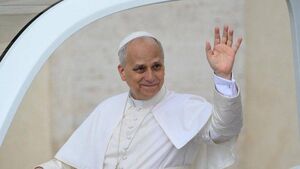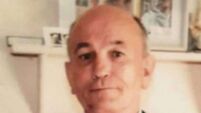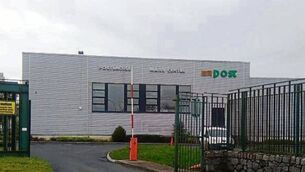Fr Paddy Byrne: Leo’s reassuring calmness and confidence already clear to see

Pope Leo X1V
POPE Leo’s first 100 days in the Petrine Office recently took place. His ministry is fuelled with deep discernment and prayer.
Two qualities stand out: calmness and confidence.
The calmness seems to come from his overwhelming belief that most problems are less intractable the more people can really listen to one another. (It’s a conviction that dove-tails nicely with the importance of listening to others which is at the very core of the synodal approach as the best and only way being church developed by Pope Francis). Before debate or discussion or discerning solutions, he suggests, we need to listen, really listen by giving others our full and undivided attention.
Leo’s confidence too is truly remarkable. Even before he became pope, he had the confidence to correct Vice-President J. D. Vance (who only became a Catholic in 2019) when he used Catholic teaching to justify Trump’s draconian immigration policy. That said, it must have been a surreal moment of holy bewilderment when the reality dawned on Cardinal Robert Prevost in the conclave as the votes began to dictate the possibility and then the probability and then the reality that though he entered the conclave as a cardinal he would be leaving as pope.
Another surreal moment was to follow when the eyes of the world were trained on the balcony of St Peter’s, that small narrow space where dramas have unfolded for centuries as pope after pope, inevitably shell-shocked and cautious, was introduced to the millions and now billions of Catholics and Christians, those of faith and no faith and all who were captivated by the extraordinary event emerging before their eyes. And then as the first actors in the holy frame emerged from the shadows and the cardinal designated to announce a new pope to the world cleared his throat and, as tradition demands, proclaims in Latin – the official language of the Catholic Church – the same words Habemus Papam (We have a Pope) and revealed the new pope’s own name and his chosen name as pope.
Then Cardinal Prevost emerged as Pope Leo XIV on the balcony of St Peter’s and spoke in English, Italian and Spanish, first slightly faltering words as if the emotion of the occasion was in danger of overwhelming him then extraordinarily confident words to the massed thousands in St Peter’s Square and to the billions around the world.
His first words to the crowd gathered in St. Peter’s Square were words of peace, directed to all the world: “Peace be with you all! Beloved brothers and sisters, this is the first greeting of the Risen Christ, the Good Shepherd who has given his life for the flock of God. I, too, would like this greeting of peace to enter your hearts, reach your families, to all people, wherever they may be, to all peoples, to all the earth. Peace be with you!” In the 100 days that followed, his calmness and his confidence indicated a serious man with a clear sense of the balance needed in his new role. If Leo appeared to be deliberately walking a tightrope by reaching out to both the liberal and conservative wings of the Church, it was fully intended.
If the question hanging in the air was whether Leo was a pope like Benedict XVI or Francis I, the answer Leo was proposing was that he was a bit of both. So, the first image of him was in the traditional vestments that Benedict loved and this was balanced by a clear statement that the Francis reform would continue. In Irish-speak, he is going to bring both sides of the road with him.
Another example of that balance was the publicity given to two churchmen he invited to meet him. One was the Jesuit priest and LGBTQ+ advocate, Fr. James Martin, with whom he echoed Pope Francis’ words that ‘everyone is welcome in the Church’ and encouraged Martin to continue his ministry. The meeting and the message, as one commentator expressed it, ‘reassured progressive circles of continuity in pastoral inclusion’.
He also invited Cardinal Raymond Burke, a staunch traditionalist, to celebrate the Latin (Tridentine) Mass at St. Peter’s Basilica – a practice restricted under Francis. The gesture is seen as an olive branch to conservatives, helping to reassure conservative Catholics who felt marginalized during Francis’s reforms.
Two other straws in the wind encourage confidence in Leo’s leadership. One is his measured and assured touch in calmly arguing for peace in a world at war. Gaza and Ukraine in particular, have elicited a focus on the need for hostages to be released from Gaza, the plight of the exhausted civilian population in Ukraine and for immediate humanitarian assistance in Gaza.
The other is his repeated identification of himself as ‘a son of Augustine’. He sees himself as an Augustinian friar, thus highlighting the importance of fraternity and community, indicative of his commitment to shared leadership in the way of Francis. Colm McCann of the who spent some time with Leo reached this reassuring verdict: ‘One thing is clear; he (Leo) doesn’t want to be the centre of attention . . . he realises that if you want to speak out, first you have to listen’.
A listening pope is surely a good omen for the building of a synodal church, a People’s Church.





